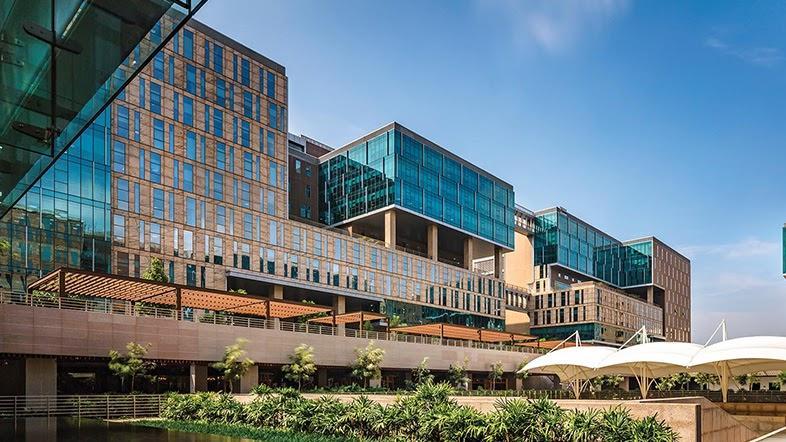
2 minute read
www.usgbc.org/resources/case-study-rmz- ecoworld
• Reduced wall window ratio (WWR) • The mall boasts of 100 percent treatment and reuse of the waste water generated • Onsite and storm water management system consisting of rain water harvesting tanks and bore wells to recharge ground water.
5.3. RMZ Ecoworld
Advertisement
5.3.1. Introduction The RMZ Ecoworld building complex is located in Bangalore, a major business and technology hub in the south of India. Consisting of 14 buildings over 77.8 acres, RMZ Ecoworld is one of the largest corporate complexes in Southern India. RMZ Ecoworld encompasses of: • An aesthetic and sustainable work super-space. • Open landscaped public space. • Sprawling health activity facilities and space. • Dedicated luxury lifestyle experience space with shopping, dining, and recreation. • Public cultural spaces like Amphitheatre and Art gallery. RMZ Ecoworld is a LEED Gold certified project, designed for a natural and optimal energy footprint with richly landscaped central sculpture and extensive water features. The project has sophisticated emergency management system along with services, support services and facility management innovations like BMS system, where all critical operations of the building are managed through a dedicated central hub within the project space.
Fig 24: RMZ Ecoworld
Source: www.usgbc.org/resources/case-study-rmz-ecoworld
5.3.2. Using Arc to achieve LEED certification
The entire Ecoworld campus was initially LEED certified under the LEED India
Core and Shell Rating 2011 system and achieved the Gold certification. In 2017, the owner of these properties, known as RMZ Corp., decided that to improve their sustainable operations and the well being of their occupants, they would take on the challenge of further improving their existing performance and re-certifying four of their buildings using Arc.
RMZ Corp. partnered with LEED Consultant En3 Sustainability Solutions.
Today, RMZ Ecoworld stands as the largest space in the region, and one of the largest in the world to be LEED-certified using the Arc platform.
At the onset of the project, the project team registered the development through the Arc website and generated an initial performance score for each building.
This opening study found the buildings to have an average performance score of 55, placing them squarely in the middle of the point range for LEED Silver.
After seeing this, RMZ Corp and the project team met to discuss potential improvements that could enhance the space and lead to a LEED Gold certification
With this in mind, they began to pursue improvements in the five Arc categories – Energy, Water, Waste, Transportation, and Human Experience.
5.3.2.1. Energy
5.3.2.1.1. Innovation - Reduced dependency on artificial lighting: The project team and RMZ Corp. engaged in several innovative practices to reduce energy usage in addition to the initial measures taken. RMZ Ecoworld’s location and design has allowed it to have substantial access to natural lighting since its initial construction. Thanks to decisions made in early design phases of the project, the buildings each were able to harvest natural lighting in many areas, improving the overall operations and livability of the building. This, however, had not been integrated into the design of the interior lighting systems. - Smart lights: While pursuing re-certification for RMZ Ecoworld, the project team installed technologies that would automatically turn off artificial lights when exposed to natural lighting, helping to save energy and work towards a higher Arc score. Additionally, while they could not mandate renovations within tenanted spaces, the project team made sure to retrofit external, lobby, and common spaces to accommodate LED light fixtures which were more energy efficient than the existing fixtures.










